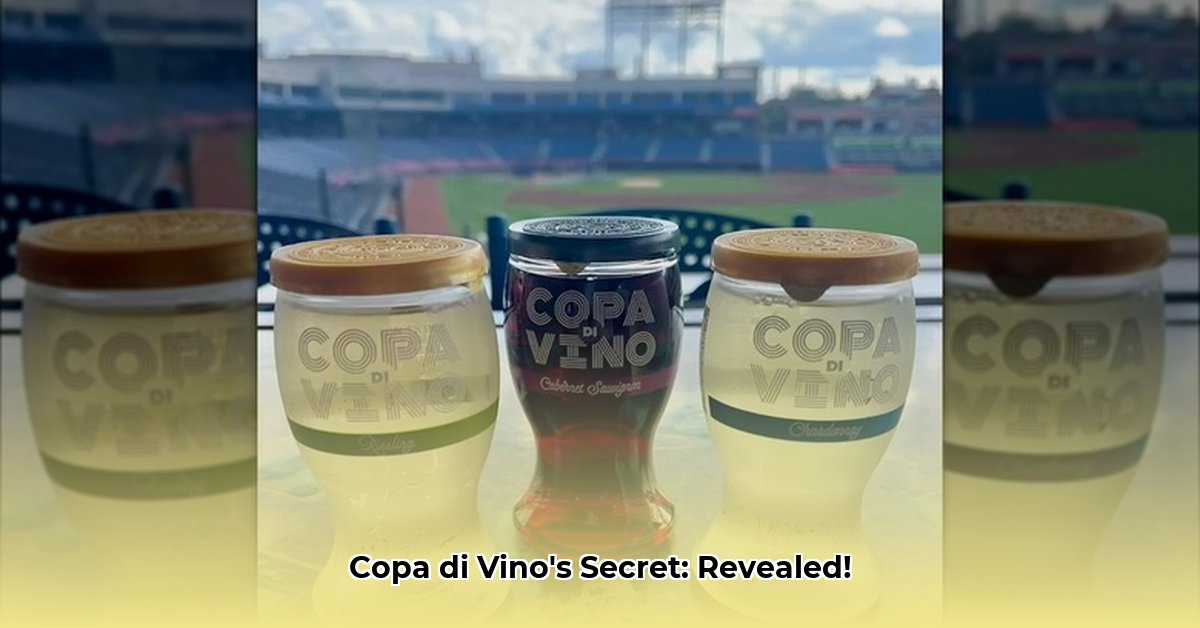
Copa di Vino: From Shark Tank to Single-Serve Success
Copa di Vino, the purveyor of single-serve wine pouches, has carved a niche in the burgeoning convenience beverage market. While its precise net worth remains undisclosed – a common characteristic of privately held companies – analyzing its market performance, strategic moves, and industry trends offers valuable insights into its potential valuation. The company's journey, punctuated by its appearance on Shark Tank and subsequent acquisition, provides a compelling case study in agile business development. But how much is this convenient wine really worth?
The Copa di Vino Story: Innovation in a Bottle (or Pouch)
Copa di Vino's innovative approach to wine consumption disrupted the traditional market. Its single-serve pouches offer portability and convenience, addressing a clear consumer demand for individual servings without waste. This simple yet impactful innovation is the bedrock of the company's success. While its Shark Tank appearance didn't result in a deal, it provided substantial brand visibility, bolstering its early growth trajectory significantly.
Navigating the Competitive Landscape of Single-Serve Wine
The single-serve wine market is fiercely competitive. Numerous brands offer similar products, each vying for consumer attention and market share. Copa di Vino has differentiated itself through a combination of factors, notably its unique packaging, which provides both convenience and a degree of perceived premium quality. However, pricing, distribution, and the overall quality of its wine offerings also play a significant role in determining its competitive edge. Ultimately, maintaining a strong brand identity and a consistent product quality will be vital for continued success.
Deciphering Copa di Vino's Value: An Indirect Approach
As a privately held company, Copa di Vino's financial statements are not publicly available, making a precise net worth calculation impossible. However, several key factors can provide insights into its potential valuation:
- Revenue and Sales Volume: The number of pouches sold and their average price directly impact the company's revenue stream. Strong sales suggest a significant market presence and profitability.
- Operating Expenses: Production costs, marketing investments, and distribution expenses all contribute to the company's bottom line. Efficient cost management directly improves profitability.
- Profitability and Margins: The difference between revenue and expenses is the key indicator of financial health. High profit margins suggest efficient operations and strong pricing power.
These factors, while not providing an exact net worth figure, paint a picture of Copa di Vino's financial health and growth potential. The key is understanding the interplay between sales, costs, and profit margins—precise data for which remains elusive.
Future Outlook: Growth Potential and Challenges Ahead
Copa di Vino's future success hinges on several critical factors:
- Brand Loyalty and Market Expansion: Maintaining a strong brand identity and expanding into new markets are crucial for sustained growth. This may involve broadening its product line or forging strategic partnerships with larger distributors.
- Innovation and Product Development: The company's ability to innovate and introduce new product offerings will be essential to staying competitive in a dynamic market. This could include exploring new wine varietals or enhancing existing packaging.
- Supply Chain and Distribution: Efficient supply chain management and a robust distribution network are paramount for meeting consumer demand and maintaining profitability.
While these represent promising prospects, challenges remain. Increased competition, changing consumer preferences, and potential supply chain disruptions could pose significant obstacles to future growth. The company must remain adaptable and responsive to market dynamics to maintain its competitive edge and continue its successful trajectory.
Conclusion: A Story of Innovation and Potential
While a precise net worth for Copa di Vino remains unavailable, its market performance, strategic acquisitions, and considerable innovation suggest a healthy and potentially high valuation. The company's pioneering approach to single-serve wine, coupled with its strategic partnerships, positions it favorably within a dynamic and expanding market. Despite the challenges ahead, Copa di Vino's future appears promising, provided it continues its strategy of innovation and adaptation within the competitive landscape. The complete financial picture will likely only be revealed should the company decide to pursue a public offering.